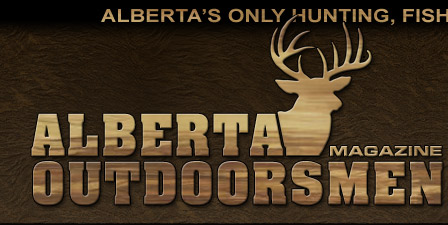|
 |
 |
Calling it a Sport
Those of us who enjoy the outdoor pursuits are often chastised for what we do by animal-rights groups who believe us to be nothing more than killers that love to inflict pain upon animals. While we know there is nothing further from the truth, these groups find what we do unfathomable and go to great lengths to tarnish our image while pushing their ideals on the rest of society.
While we don’t consider ourselves to be true killers in the sense of the word like the antis portray us to be, the truth is, that is exactly what we’re doing... killing. There’s no hiding behind this fact; stuff dies when we head afield. We just try to do our best to make sure that what we’re killing doesn’t suffer needlessly at our hands. No outdoorsman or woman takes pleasure in that.
I have always shuddered when hunting and fishing are referred to as “sports”, and you will never see that word used to distinguish our community within this magazine. It’s a poorly chosen word used to describe our activities and the term “blood sport” is derived from the sportsmen term.
Let’s face it, there is nothing “sporting” about what we do and the word is often thrown back into our faces when people suggest that the animals we pursue should be given guns to even up the game. Sports and game go hand in hand; sports and our outdoor pursuits do not. Killing is not a game, nor is it a sport.
However, killing is a necessary part of what we do and necessary for the management (and betterment) of many wild species.
We will forever have to defend ourselves for the killing part of our outdoor pursuits; however, we should never hide behind the killing by calling it a sport.
Telling the Truth
Truth About Fur (truthaboutfur.com) is a website designed to “give a voice to the men and women who carry on this unique artisanal tradition, working as fur farmers and trappers, processors and traders, designers and craftspeople.”
The website is the work of several organizations, including the Fur Institute of Canada (fur.ca)—a group that works very hard to provide “accurate and credible information relating to the economic, social, cultural and environmental issues surrounding the harvesting and farming of fur in Canada”—is well put together with many interesting facts related to the fur industry and, most importantly, there is no hyperbole.
Unlike many of the anti-trapping, -hunting and -fishing groups that go out of their way to provide “shock imagery” to generate great wealth and further personal ideals, Truth About Fur and the Fur Institute of Canada tell the truth, because there is no benefit to lying about or sugar coating what trappers do.
Too Many Elk
Recently, much has been written about the elk herd that currently exists on the Suffield Military Base, calling it “out-of-control” and in need of “culling”.
Area ranchers are concerned about crop damage, the potential for disease spreading to their cattle, and want the herd thinned. And not just by hunting, claiming that hunting alone will never reduce the size of the herd.
 |
"Many are calling for a culling of the elk herd on the Canadian Forces Base Suffield."
|
One suggestion sees elk captured from the base trucked to an elk farm where, over time, they would be slaughtered and then packaged for consumption and provided to food banks.
However, according to our new Environment and Sustainable Resource Development (ESRD) Minister, Kyle Fawcett, the herd will be managed long-term through the use of hunting licences and not through the use of an elk farm and abattoir.
Two hundred elk were originally brought to the base from Elk Island National Park for grazing purposes about 15 years ago. Today, however, the number of elk is estimated to be as high as 8000 animals and growing yearly.
Two years ago, ESRD began issuing cow elk hunting licences for the base with 200 given out through the draw process. Three hundred were issued the following year and this year, 600 cow elk licences were issued through the draw process.
Two ways to deal with the burgeoning Suffield elk population is to issue more tags and to extend the season on the Base’s rangelands, both ideas being looked at by ESRD for future seasons.
Alberta’s hunters are sure to benefit from this growing elk population. ■
For previous Outdoor Pursuits click here.
|
|
|
|


